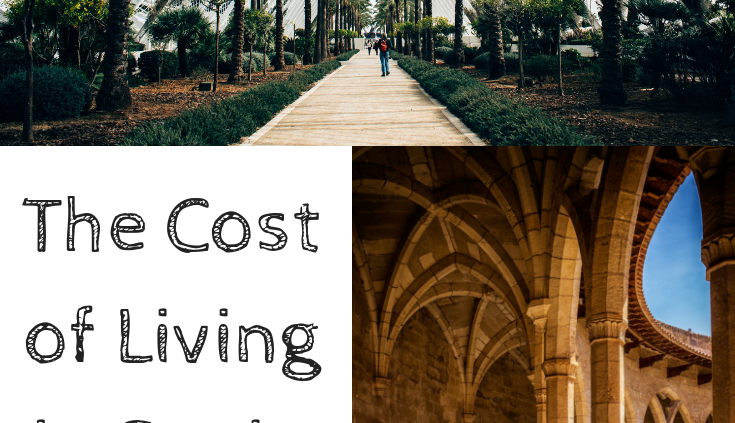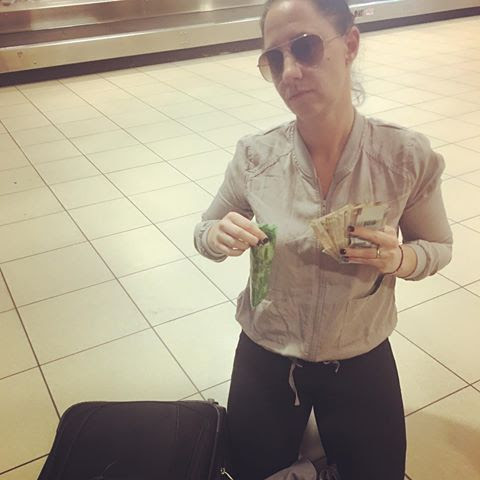I view travel as an investment in my family and my kids. The preparation work is taxing, it’s costly, and it’s always worth it. However, there are ways that you can get your kids excited, involved, and well-prepared for your next trip so that they are invested in the travel and learning alongside you.

Sippin on some sizzurp after a pineapple tour in the Azores. We read how pineapple made its way to the US after we left.
In the weeks leading up to our recent trip to France, the kids and I would climb into bed together and read The Invention of Hugo Cabret, a magical book about an orphaned clockmaker’s son set in a Parisian train station. We’d dream of what Paris would be like, make predictions, and anticipate the upcoming trip. As I write this, a month post-travel, those ‘tuck ins’ were just as special as the trip itself.
For this post I enlisted the help of Mandy Wallace, mom of three, and full-time RV homeschool extraordinaire. Her family is 15 months into their adventure and has explored 32 states, Canada, Mexico, and 23 National Parks.
If you’re like Mandy and myself, we want our kids to suck the marrow out of each trip, so how do you make your trip fun and meaningful (dare I say *gasp* educational) but low-stress at the same time?
We put together a list of some ways to add a deeper sense of understanding and excitement to your travels with your family. The great part: You can invite your kids to do these before, during, and after your trip. Here are our favorite resources and activities (for reference, we’ve used these with 2-9 year old age set):
1. MAP PLACEMATS.
This is a simple, interactive, and cheap. Learn longitude, latitude, opposing seasons, and have “name that capital contests” over bowls of Frosted Mini Wheats. If you buy the plastic placemats, let the kids write on them with dry erase markers. Here’s my favorite set of 4 placemats from Amazon We used these for years and they saved our table too:)
2. THE “WHOS WAS..” BOOK SERIES

I was so grateful for this little paperback when I was trying to get my son to understand tea taxes and the Boston Tea Party. My 7-year-old was enraged with my pathetic understanding of the subject so I turned to these books. They have kid-friendly autobiographies about famous figures from the past and present (ex: Jane Goodall, Malala Yousafzai, the Dalai Lama, Harriet Tubman, and much more.) Using illustrations and about 100 pages – this book series tells is great for grades 2-5. Find them on Amazon. The series also explains historical events like the Holocaust, Titanic, Twin Towers, and D-Day. If you need convincing – go ahead and try explaining the Great Depression to a 6-year-old and let me know how that goes for ya.
They also have an AMAZING App and printable quizzes/worksheets that can be found here.
3. MAKE A MODEL.
Geography a huge part of your trip? Get your hands dirty and make a salt dough map (here’s the how to from a family that made the state of Alabama.) Architecture more a focus? Make a marshmallow and toothpick model of the Parthenon or Eiffel Tower. Famous artist, piece of art, or collection in your sights? Google the gallery you’re going to and make a piece inspired by a piece in the gallery – then find the real one when you get there!
4. ALL THINGS NATIONAL GEOGRAPHIC.
There’s a lot of downtime during travel and you will be tempted to give out too much screen time during long layovers, car rides, and while eating out. Make kids “earn” screen time by reading.
Kate allows her kids: 1 lovie, 2 books, and 2 activities on trips and her favorites are…Nat Geo! Here are just a few: Ultimate US Road Trip and the Little Kids First Big Book of the World. These include maps, games, and activities for hours of plane or road-trip backseat fun. Another great gift idea.
5. LOCAL WEBSITES:
Check out the local Chamber of Commerce, National Parks, and Library websites in your destination city. You can usually find a list of upcoming festivals, historical points of interest, and events.
Citymomsblog.com has a local syndicate in almost every US city they typically have seasonal lists or “staycation” ideas for their local audience where you can grab ideas. Often googling “family tours [your destination]” or “[your destination] family fun” of “[your destination] with kids” will get you a solid list of places to check out (and some blogs from local parents who can give you the scoop.)
6. JOURNAL.
Buy a cheap small spiral notebook and write down a few prompts:
– What was your favorite memory from the trip?
– What did you learn?
– What made you laugh?
– What is something you will never forget?
– What was your favorite city and why?
– What did you discover?
The kids answers will surprise you. It’s fun to read, easy to pack, and more special than any souvenir. You could also do this with prediction prompts before your trip as a fun plane or road trip activity.
7. LET KIDS PUBLISH THEIR FINDS.
Grab your kids an Instagram handle and let them take pics and publish them with captions of facts they’ve learned or the journal prompts aforementioned. Share their ‘gram with family and friends. (If you’re worried about kids getting obsessed too early with likes and comments or wanting your phone all.the.time., pick a time of day that they’ll post and check their feed.) Mandy’s kids post about their creations and discoveries on the road which has been a great way for her reluctant writer (who thinks that journalling is about as fun as swimming in quicksand) to get his observations and experience the power of writing to an audience.
8. YOUTUBE IT.
Believe it or not, YouTube actually has some content that goes deeper than ladies opening boxes and describing how excited they are to try the contents. Mandy’s kids are riveted to the storytelling of documentaries through narration, interviews, and video (like this vid of the Mt. St. Helens eruption eye witnesses from A&E.) They love videos made by other kids who are doing similar things. Granted, this comes with the caveat of you probably wanting to preview the videos before showing them to your kids (the descriptions in that Mt. St. Helen’s piece are pretty gruesome!) and definitely de-selecting the autoplay function.
9. TOURS.
Before you take off, do some preliminary research about the place your destination and what they are known for. Coffee? Chocolate? Pasta? Rice? Tea? What factory or field could you tour? Specifically, what places allow you a ‘behind the scenes’ experience or tasting? Our favorite resources for tours are: AirBnB Experiences, Withlocals (in Europe), and Viator. These tours can also be gifted…wink wink grandparents;)
*Pictured: A private baking class in a French home. We made Madelines, chatted about French customs, and ate on Anne’s rooftop with this stunning view of the Sacre Coeur. We left with a new friend and bags of warm treats that we made! Use my Withlocals link for 30 euro off of your first experience. Withlocals offers a variety of private and affordable tours all over Europe.
10. LANGUAGE.
Check out an interactive app like Duolingo to help your kids get some basic phrases down before you go. It’s really like playing a game and you can work with each other to use the phrases around the house before departure. Or, head to YouTube again for some kid-focused basic language introduction. Maybe watch an episode or beloved movie in your destination’s language.
Maybe even have the kids make labels and tape them around the house with common phrases and useful nouns (bathroom, I’m hungry, my name is, water, etc.)
11. MAPS and MARKERS
Before you go or the day you get there, buy a tourist map or atlas. Find your destination together. Find your hotel or campground. Highlight your route. If you’ve got every day planned, use different colors to mark each day’s adventures. While you’re there or when you get back, retrace your steps on the map with your markers. Then hang up the map as a visual reminder and memento of all the places you discovered on your trip. Retell your story and fold it into the narrative of your family’s adventures.
This is a lengthy list and by no means should you look at these activities as “one more thing” to do. Have your kids pick an activity, app, or book months in advance or weeks after you’re home. It’s not about doing it perfect – it’s about augmenting the learning and reflecting on all of the amazing things that you get to experience together!

*About Mandy: She’s a witty blend of practicality and vulnerability. I can rely on her feed for gorgeous pictures and great book recommendations. Mandy’s creative homeschool lessons range from poetry tea parties to treasure hunts. Check her out on Instagram: @mandy_adventure_wallace & @themagichomeschoolbus, and grab more RV family travel ideas from her site: Now Take Off!, or check out her travel journal from their first six months on the road at Outside the Slides.
Tell us what you do to maximize learning and engage your little ones. As always, thanks for reading and sharing.
Kate and Mandy







